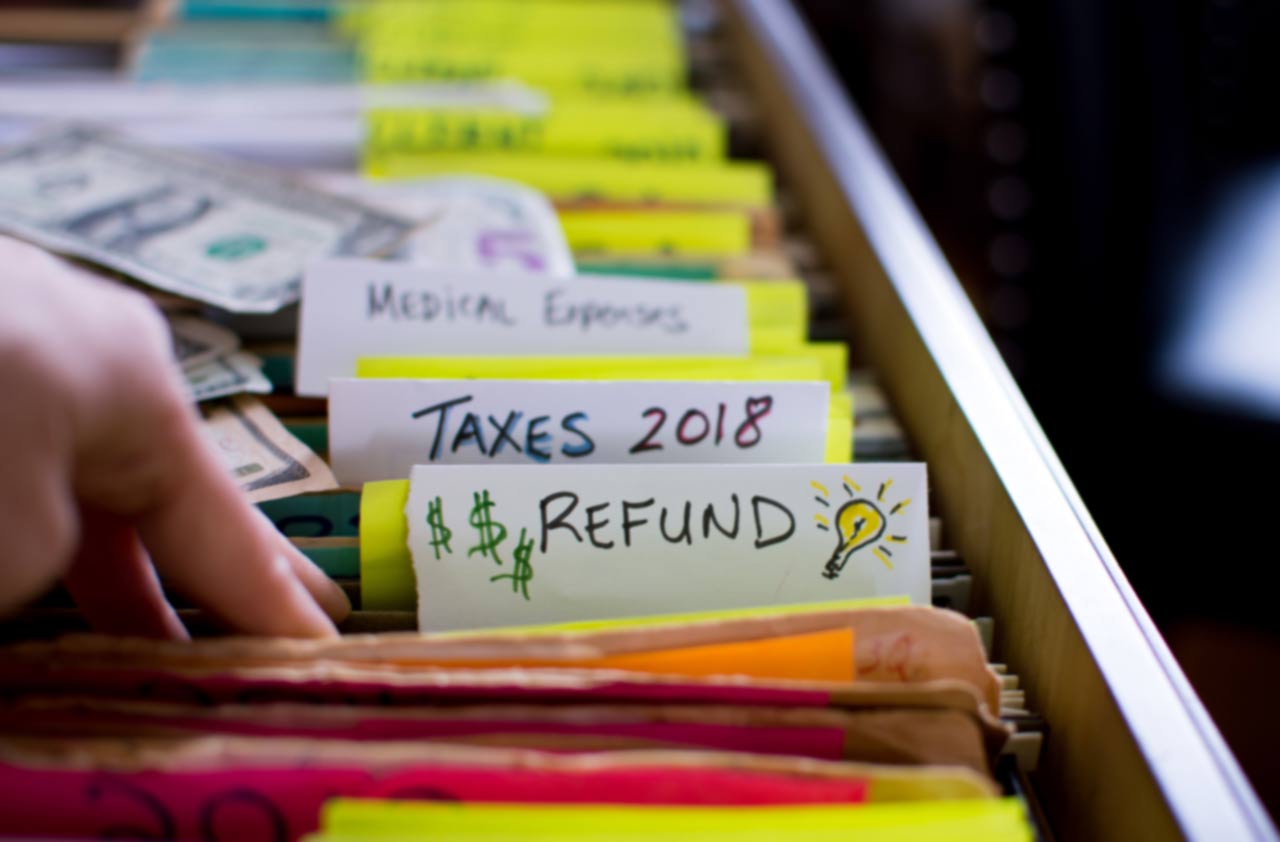4 Things You Should Know Now to Save on Taxes Later
Every money move you make (or that you fail to make) has potential tax consequences, either now or down the road. Take some actions today to put yourself in a better position for the long term.


With 2018 taxes hopefully behind you, probably the last thing you want to think about is what taxes may look like in 2019 and beyond.
I get that.
But you should be thinking about it. Right now, and every time you ponder making a change to your retirement portfolio. Because a tax-efficient financial plan — one that considers the potential savings you could get over a lifetime instead of just going year-to-year — can make all the difference in the health of your nest egg.

Sign up for Kiplinger’s Free E-Newsletters
Profit and prosper with the best of expert advice on investing, taxes, retirement, personal finance and more - straight to your e-mail.
Profit and prosper with the best of expert advice - straight to your e-mail.
Here are four things I wish people knew about managing their taxes now and in retirement.
1. We have a limited window of opportunity.
2018 was the first year we filed our taxes under the new tax law. While there are certainly some personal details that determined whether you paid more or less taxes than in the past, one change every taxpayer benefited from was the lower tax rates. As the law stands, those lower rates are set to expire Dec. 31, 2025. However, many professionals believe that depending on the results of the election in 2020, taxes may increase before 2026, and when they do increase, they will not JUST go back to where they were in 2017 but potentially much higher. Thus, for many people, the tax rates we see over the next several years may be the lowest rates we see for quite some time.
2. It’s important to stay focused on the big picture.
I’ve seen people scramble to earn an extra half to 1% return on an investment, only to lose what they gained — and more — because they weren’t paying attention to how that product, account or strategy would be taxed. A 6% rate of return that’s tax-free will net you more than an 8% rate of return that’s taxable. Over a couple of years, it’s no big deal. But over decades, that’s a lot of money you could be leaving on the table. Depending on the size of your portfolio, taxes can represent a significant expense. Combined with inflation, they can eat away at the retirement income you expect to draw.
3. It’s never too late to include some tax-free income sources in your portfolio.
- If you open a Roth IRA, the money you contribute can grow completely tax-free as long as you follow certain rules. And — unlike with traditional IRAs, which close the door to new contributions once you turn 70½ — for Roth IRAs, there are also no contribution limits based on age. So even if you’re 75 and want to keep putting money in, you can. Keep in mind there are earned income rules for Roths, however. If you are doing Roth conversions, you can do those at any age and any amount, so you are in complete control. Furthermore, there are no required minimum distributions (RMDs) at 70½. And because your withdrawals won’t count toward your annual income, you’re less likely to have to pay taxes on your Social Security benefits or a higher premium for Medicare Part B in retirement when taking distributions from a Roth IRA vs. a traditional IRA. (For more on Roth rules, see How Much Can You Contribute to a Roth IRA for 2019?)
- You could invest in municipal bonds, which provide income that’s free from federal taxes. The current drawback, of course, is that interest rates are still low. And in a rising-interest-rate environment, bonds tend to lose value. Also, although the income from your bonds won’t be taxed, it can still cause your Social Security to be taxed.
- Depending on your taxable income, your qualified dividends and long-term capital gains won’t be taxed. For the 2019 tax year, your tax rate is zero if your income threshold falls below $78,750 and you’re married filing jointly, $52,750 and filing as head of household, or $39,375 if filing as single or married filing separately.
4. It isn’t just what you invest in, it’s also how you diversify your accounts and manage your tax bracket.
you and your spouse earned pension checks, maximized your Social Security benefits and diligently contributed to your IRAs, your retirement income could be higher than you expected. If you manage your tax bracket throughout your life, you won’t get hit with a ticking tax time bomb in retirement. There are four distinct time periods to be aware of:
- When both you and your spouse are still working. These are your high-income years, so it makes sense to contribute to a tax-deferred retirement savings account (a 401(k), traditional IRA, etc.) to lower your tax bill. But you also should be looking at taxable and after-tax accounts.
- When you’re between retirement age (over 60) and age 70½. These are the years when retirees usually have the most control over their income. It may be a good time to start withdrawing from a tax-deferred account (penalty-free) and pay taxes on that money.
- When you turn 70. Get ready to lose some of that control. At 70, you’ll have to file for your Social Security benefits (if you haven’t already done so) and, ready or not, you must begin taking RMDs from your tax-deferred retirement accounts at 70½. Your income could rise again.
- When you’re widowed. A surviving spouse must file income taxes as single, which means higher tax tables and a lower standard deduction. Your income may drop, but your taxes still could go up.
The Individual tax season for 2018 is largely over, which makes this a good time to talk to your tax professional and financial adviser about what you should do to minimize your taxes in retirement. You’ll get their complete attention; hopefully they’ll have changed their mindset to be looking at the future opportunities offered by the tax reforms vs. just focusing on how to save a dollar today. By starting now, you’ll have plenty of time to make any changes you feel would improve your tax status in the future.
Kim Franke-Folstad contributed to this article.
Disclaimer
The appearances in Kiplinger were obtained through a PR program. The columnist received assistance from a public relations firm in preparing this piece for submission to Kiplinger.com. Kiplinger was not compensated in any way.
Get Kiplinger Today newsletter — free
Profit and prosper with the best of Kiplinger's advice on investing, taxes, retirement, personal finance and much more. Delivered daily. Enter your email in the box and click Sign Me Up.

Michael Neuenschwander, CPA, CFP®, teams with his father, Allen Neuenschwander, CPA, CFP®, at their financial planning firm, Outlook Wealth Advisors LLC in Texas. Michael is an Investment Adviser Representative and a licensed insurance professional.
-
 Married? Five Ways to Ensure Your Estate Plans Work in Tandem
Married? Five Ways to Ensure Your Estate Plans Work in TandemGetting on the same page now means fewer potential problems when it counts.
By Kiplinger Advisor Collective
-
 12 Investments No Retiree Should Make
12 Investments No Retiree Should MakeIn retirement, when it's wise to take fewer risks with your nest egg, some investments are just nuts.
By David Rodeck
-
 Before You Invest Like a Politician, Consider This Dilemma
Before You Invest Like a Politician, Consider This DilemmaAs apps that track congressional stock trading become more popular, investors need to take into consideration some caveats.
By Ryan K. Snover, Investment Adviser Representative
-
 How to Put Together Your Personal Net Worth Statement
How to Put Together Your Personal Net Worth StatementNow that tax season is over for most of us, it's the perfect time to organize your assets and liabilities to assess your financial wellness.
By Denise McClain, JD, CPA
-
 Bouncing Back: New Tunes for Millennials Trying to Make It
Bouncing Back: New Tunes for Millennials Trying to Make ItAdele's mournful melodies kick off this generation's financial playlist, but with the right plan, Millennials can finish strong.
By Alvina Lo
-
 Early-Stage Startup Deals: How Do Convertible Notes Work?
Early-Stage Startup Deals: How Do Convertible Notes Work?Some angel investors support early startups by providing a loan in exchange for a convertible note, which includes annual interest and a maturity date.
By Murat Abdrakhmanov
-
 SRI Redefined: Going Beyond Socially Responsible Investing
SRI Redefined: Going Beyond Socially Responsible InvestingNow that climate change has progressed to a changed climate, sustainable investing needs to evolve to address new demands of resilience and innovation.
By Peter Krull, CSRIC®
-
 Here's When a Lack of Credit Card Debt Can Cause You Problems
Here's When a Lack of Credit Card Debt Can Cause You ProblemsUsually, getting a new credit card can be difficult if you have too much card debt, but this bank customer ran into an issue because he had no debt at all.
By H. Dennis Beaver, Esq.
-
 Going to College? How to Navigate the Financial Planning
Going to College? How to Navigate the Financial PlanningCollege decisions this year seem even more complex than usual, including determining whether a school is a 'financial fit.' Here's how to find your way.
By Chris Ebeling
-
 Financial Steps After a Loved One's Alzheimer's Diagnosis
Financial Steps After a Loved One's Alzheimer's DiagnosisIt's important to move fast on legal safeguards, estate planning and more while your loved one still has the capacity to make decisions.
By Thomas C. West, CLU®, ChFC®, AIF®